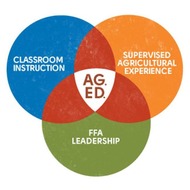(View Complete Item Description)
This lesson presents an overview of the role of genetics, breeding, and reproduction in animal agriculture. Learners will become familiar with fundamentals of genetics, complete a Punnett square, understand phenotypes and genotypes, identify parts of reproductive systems, and discuss breeding systems used in the animal industry. This represents a portion of the Introduction to Agriculture, Food, and Natural Resources (AFNR) series in Nebraska middle and high school agricultural education.
Material Type:
Activity/Lab,
Assessment,
Homework/Assignment,
Lesson Plan
Author:
Owl Nest Manager




















